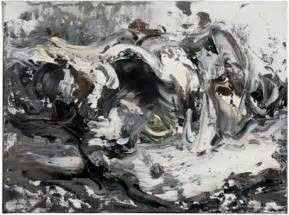Artist Analysis- Maggi Hambling
 |
| Wave crashing, Oil on canvas, 2009, 30 × 41cm |
Some work
that I have already completed based on this artist is a mind map which I have
created in order to link each artist through several aspects in order to
discover what part of each artist will be best to focus on. During this I have
written about how difficult it will be to make similar pieces to Hambling’s
work due to her paintings being based on wave movements. Due to the fact that
we live in area where the Ocean is over 100 miles away, it wouldn’t be an easy
task for me to get down there in the period of a storm which is when Hambling
would create her pieces because of the dramatic waves produced by the weather. Despite
this I did visit Wales during the bank holiday Monday meaning I was able to
photograph as much relatable content as possible which included several
different shots of small waves crashing on the shore, taking more than one
photograph ensured that I could capture as much movement as possible.
Below is the
best of the images I took, I think these show the best movement of before,
during and after the crashing of the wave.

Within these
photos my main focus is the flash of white which is produced when the wave
crashes, this is the part that demonstrates most movement in the wave because
it looks rough and aggressive, I could replicate this effect by gathering
textured materials and surfaces that I could build on top of, such as
mount board and homemade paper.
Another piece of work I completed on this artist was an
experiment sheet using different mediums, I got the same outcome as when I used
these materials for my other artist (Scott Naismith) in that the best ones were
the materials which provided texture, although they didn’t have such good
blending ability which meant the painting looked more unrealistic and neat.
Although this may seem a downfall with the materials, Maggi Hambling does produce
some expressive compositions that don’t encounter much realism. But also (especially
in Hambling’s work) a rough effect needs to be made in order to create more
movement.
One way that I think I could begin work using this
artist is by using a collaberation of my own photos and Hambling’s work and
building on to them to form texture but also keeping in the curvatious form of
the wave at the same time.
My favourite and most varied work I’ve completed on the
bases of this artist is during class with three materials; fine liner, pencil
and charcoal.


As development for this mark making exercise, I have recently created a composition that has more personal aspects such as inspiration from photographs which I have taken on a previous holiday to Wales and a trip to Leicester. These drawings and Maggi Hambling’s work came into this piece throughout the centre where a curvaceous shape is formed. The reason I did this was to create a break between the busy outer edges of the board and it also demonstrates the crazy and unpredictable the human mind is.


my drawings
went on, they became rougher and more elegant due to me loosening my grip on
the charcoal, this would really well in terms of creating sharp fast movement
but during this I began to lose the curvaceous shape of the wave which is
really important to maintain.
As development for this mark making exercise, I have recently created a composition that has more personal aspects such as inspiration from photographs which I have taken on a previous holiday to Wales and a trip to Leicester. These drawings and Maggi Hambling’s work came into this piece throughout the centre where a curvaceous shape is formed. The reason I did this was to create a break between the busy outer edges of the board and it also demonstrates the crazy and unpredictable the human mind is.












No comments:
Post a Comment